Abstract
Three children and two young adults with severe asthma who had frequent episodes of respiratory failure were studied. Isocapnic hypoxia and hyperoxic hypercapnia were produced separately using a rebreathing apparatus. Alveolar carbon dioxide tension and oxygen tension were estimated by continuously sampling expired gases. The three young children had a diminished response to hypoxia but a normal response to hypercapnia when compared to control asthmatic children (p less than 0.05) or healthy children (p less than 0.05). The two young adult patients had a normal response to hypoxia but one had a low response to hypercapnia. Studies of parents of these patients suggested that the chance combination of a possibly familial, inappropriate response to hypoxia with severe asthma would lead to a risk of respiratory failure.
Full text
PDF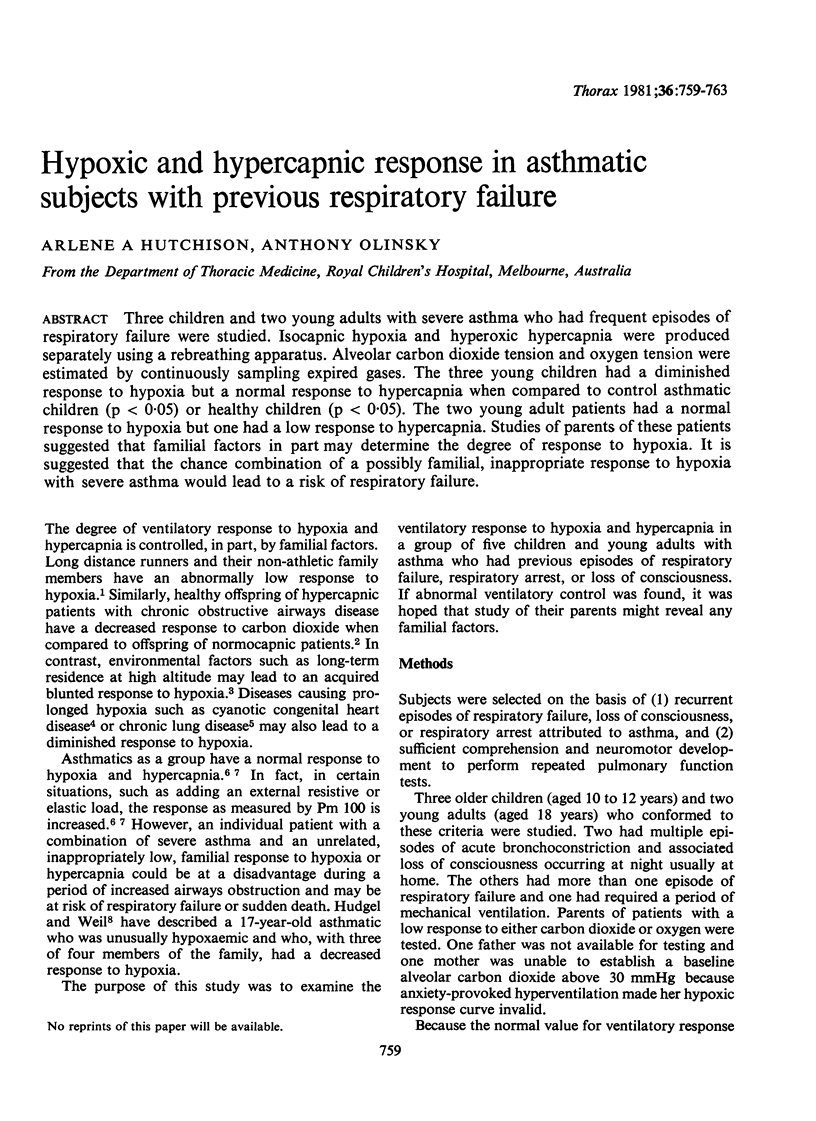
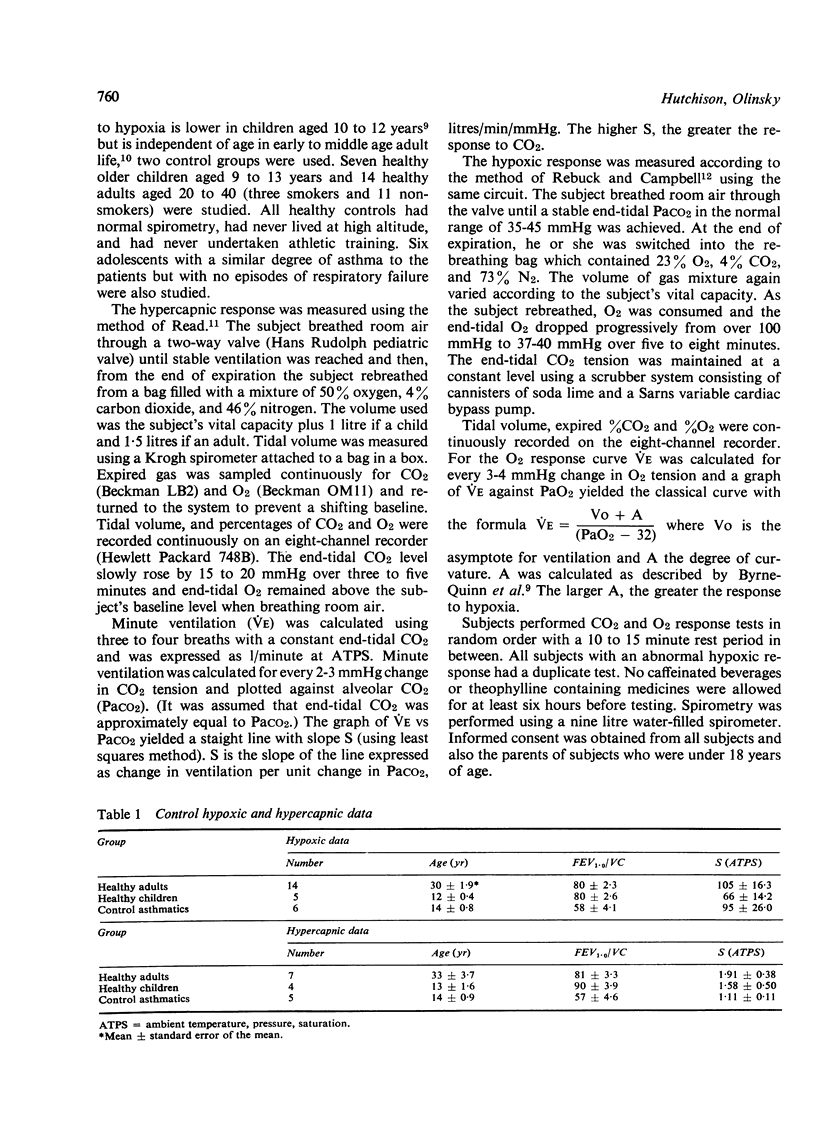
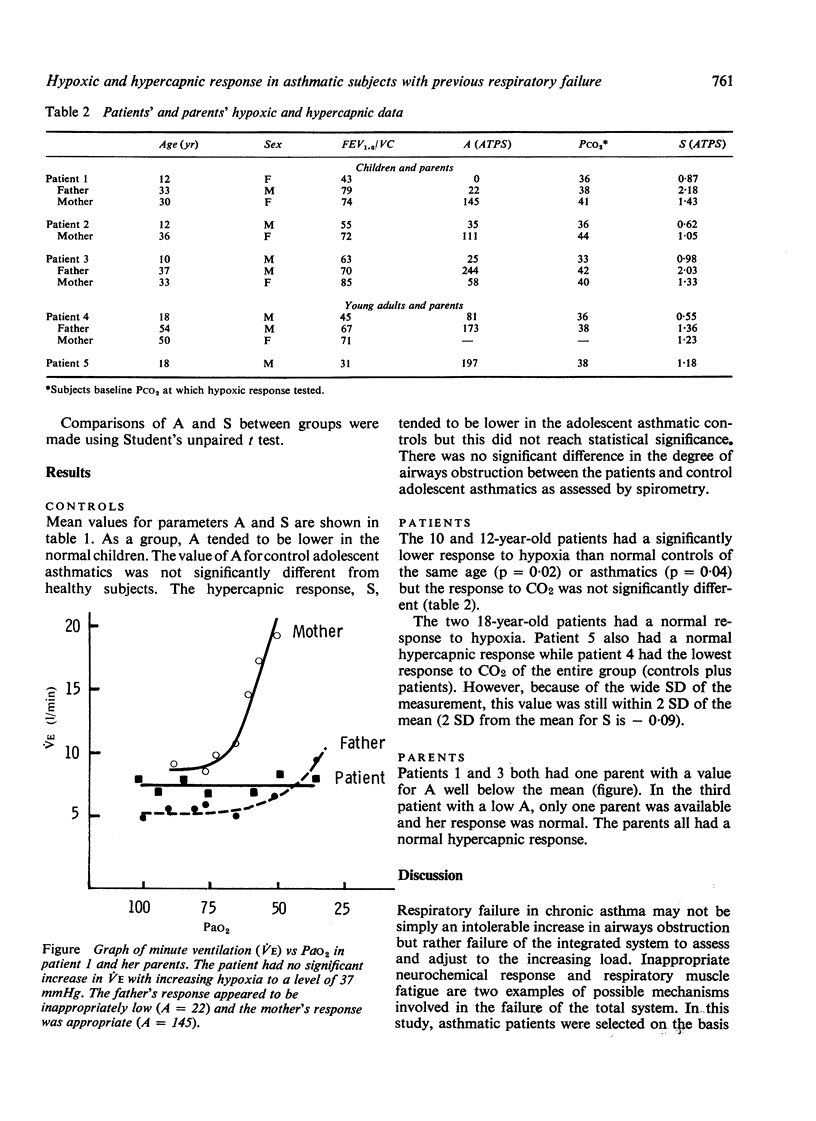
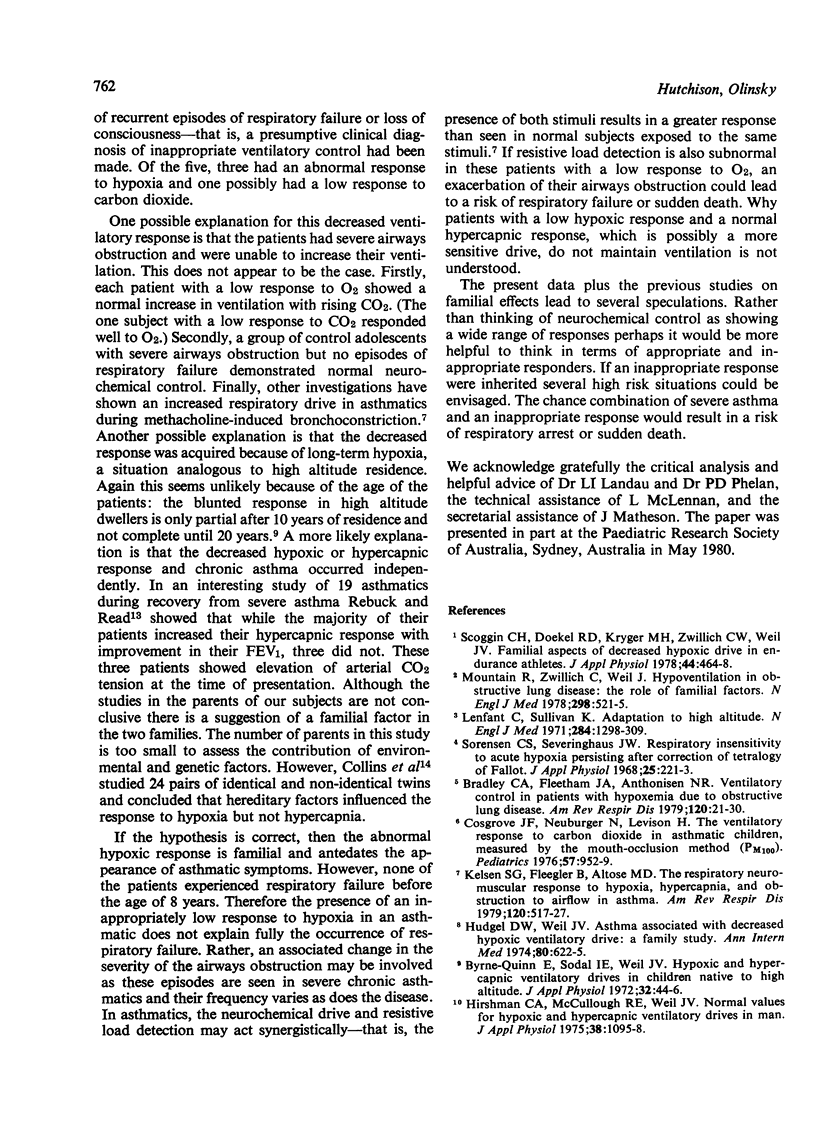
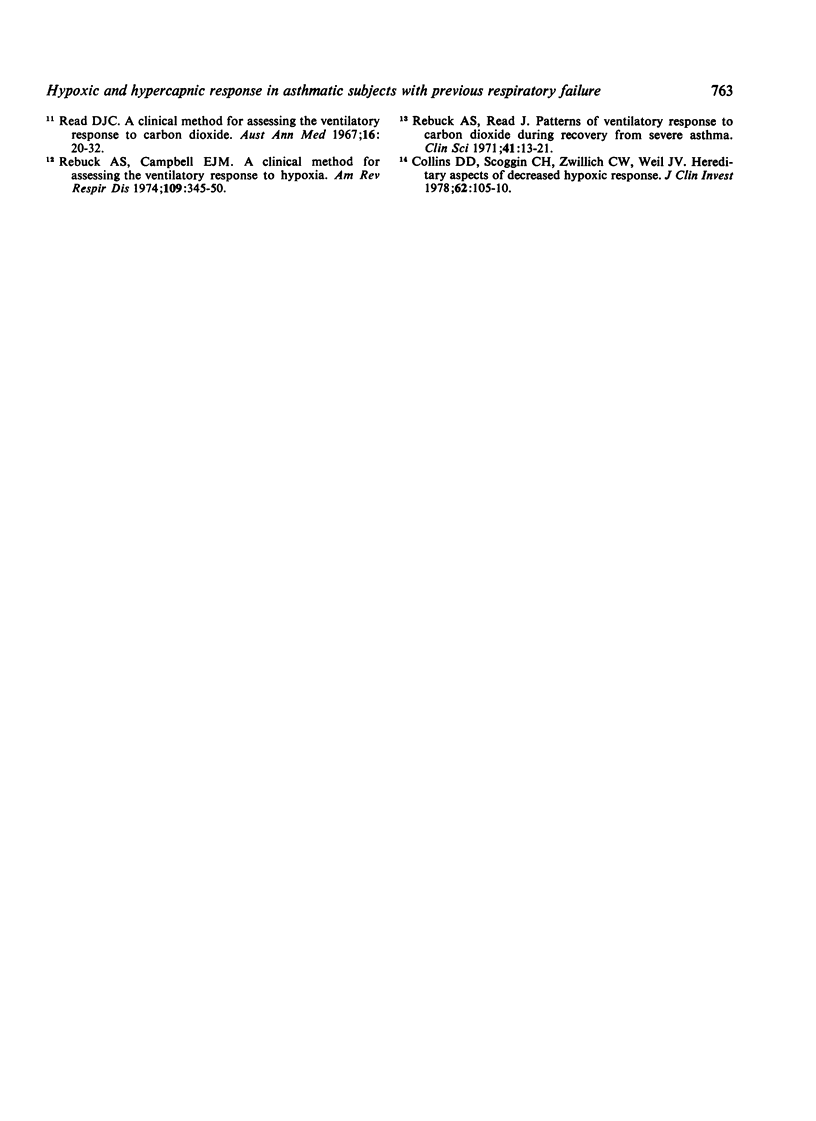
Selected References
These references are in PubMed. This may not be the complete list of references from this article.
- Bradley C. A., Fleetham J. A., Anthonisen N. R. Ventilatory control in patients with hypoxemia due to obstructive lung disease. Am Rev Respir Dis. 1979 Jul;120(1):21–30. doi: 10.1164/arrd.1979.120.1.21. [DOI] [PubMed] [Google Scholar]
- Byrne-Quinn E., Sodal I. E., Weil J. V. Hypoxic and hypercapnic ventilatory drives in children native to high altitude. J Appl Physiol. 1972 Jan;32(1):44–46. doi: 10.1152/jappl.1972.32.1.44. [DOI] [PubMed] [Google Scholar]
- Collins D. D., Scoggin C. H., Zwillich C. W., Weil J. V. Hereditary aspects of decreased hypoxic response. J Clin Invest. 1978 Jul;62(1):105–110. doi: 10.1172/JCI109093. [DOI] [PMC free article] [PubMed] [Google Scholar]
- Cosgrove J. F., Neuburger N., Levison H. The ventilatory response to carbon dioxide in asthmatic children, measured by the mouth-occlusion method (Pm100). Pediatrics. 1976 Jun;57(6):952–959. [PubMed] [Google Scholar]
- Hirshman C. A., McCullough R. E., Weil J. V. Normal values for hypoxic and hypercapnic ventilaroty drives in man. J Appl Physiol. 1975 Jun;38(6):1095–1098. doi: 10.1152/jappl.1975.38.6.1095. [DOI] [PubMed] [Google Scholar]
- Kelsen S. G., Fleegler B., Altose M. D. The respiratory neuromuscular response to hypoxia, hypercapnia, and obstruction to airflow in asthma. Am Rev Respir Dis. 1979 Sep;120(3):517–527. doi: 10.1164/arrd.1979.120.3.517. [DOI] [PubMed] [Google Scholar]
- Lenfant C., Sullivan K. Adaptation to high altitude. N Engl J Med. 1971 Jun 10;284(23):1298–1309. doi: 10.1056/NEJM197106102842305. [DOI] [PubMed] [Google Scholar]
- Mountain R., Zwillich C., Weil J. Hypoventilation in obstructive lung disease. The role of familial factors. N Engl J Med. 1978 Mar 9;298(10):521–525. doi: 10.1056/NEJM197803092981001. [DOI] [PubMed] [Google Scholar]
- Read D. J. A clinical method for assessing the ventilatory response to carbon dioxide. Australas Ann Med. 1967 Feb;16(1):20–32. doi: 10.1111/imj.1967.16.1.20. [DOI] [PubMed] [Google Scholar]
- Rebuck A. S., Campbell E. J. A clinical method for assessing the ventilatory response to hypoxia. Am Rev Respir Dis. 1974 Mar;109(3):345–350. doi: 10.1164/arrd.1974.109.3.345. [DOI] [PubMed] [Google Scholar]
- Rebuck A. S., Read J. Patterns of ventilatory response to carbon dioxide during recovery from severe asthma. Clin Sci. 1971 Jul;41(1):13–21. doi: 10.1042/cs0410013. [DOI] [PubMed] [Google Scholar]
- Scoggin C. H., Doekel R. D., Kryger M. H., Zwillich C. W., Weil J. V. Familial aspects of decreased hypoxic drive in endurance athletes. J Appl Physiol Respir Environ Exerc Physiol. 1978 Mar;44(3):464–468. doi: 10.1152/jappl.1978.44.3.464. [DOI] [PubMed] [Google Scholar]
- Sorensen S. C., Severinghaus J. W. Respiratory insensitivity to acute hypoxia persisting after correction of tetralogy of Fallot. J Appl Physiol. 1968 Sep;25(3):221–223. doi: 10.1152/jappl.1968.25.3.221. [DOI] [PubMed] [Google Scholar]


